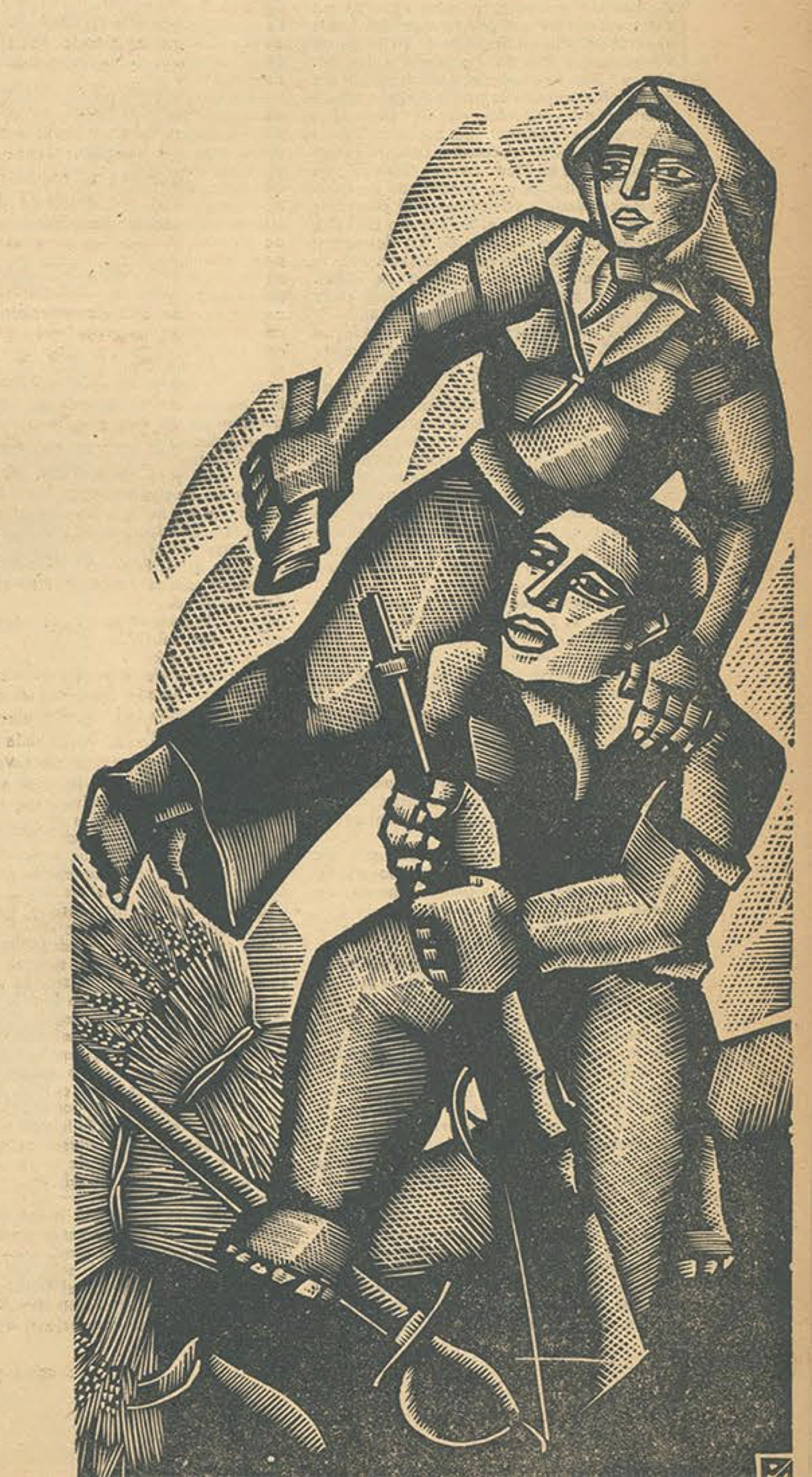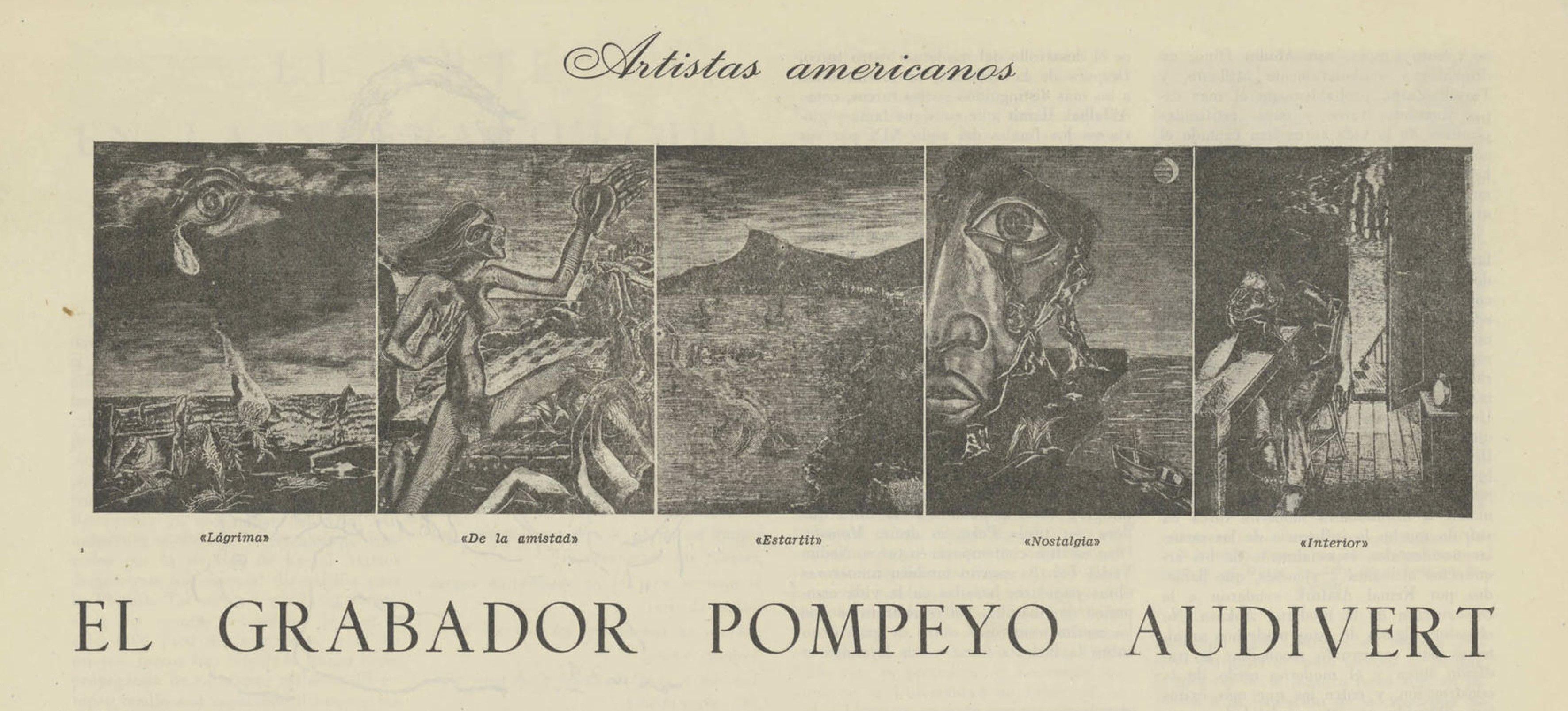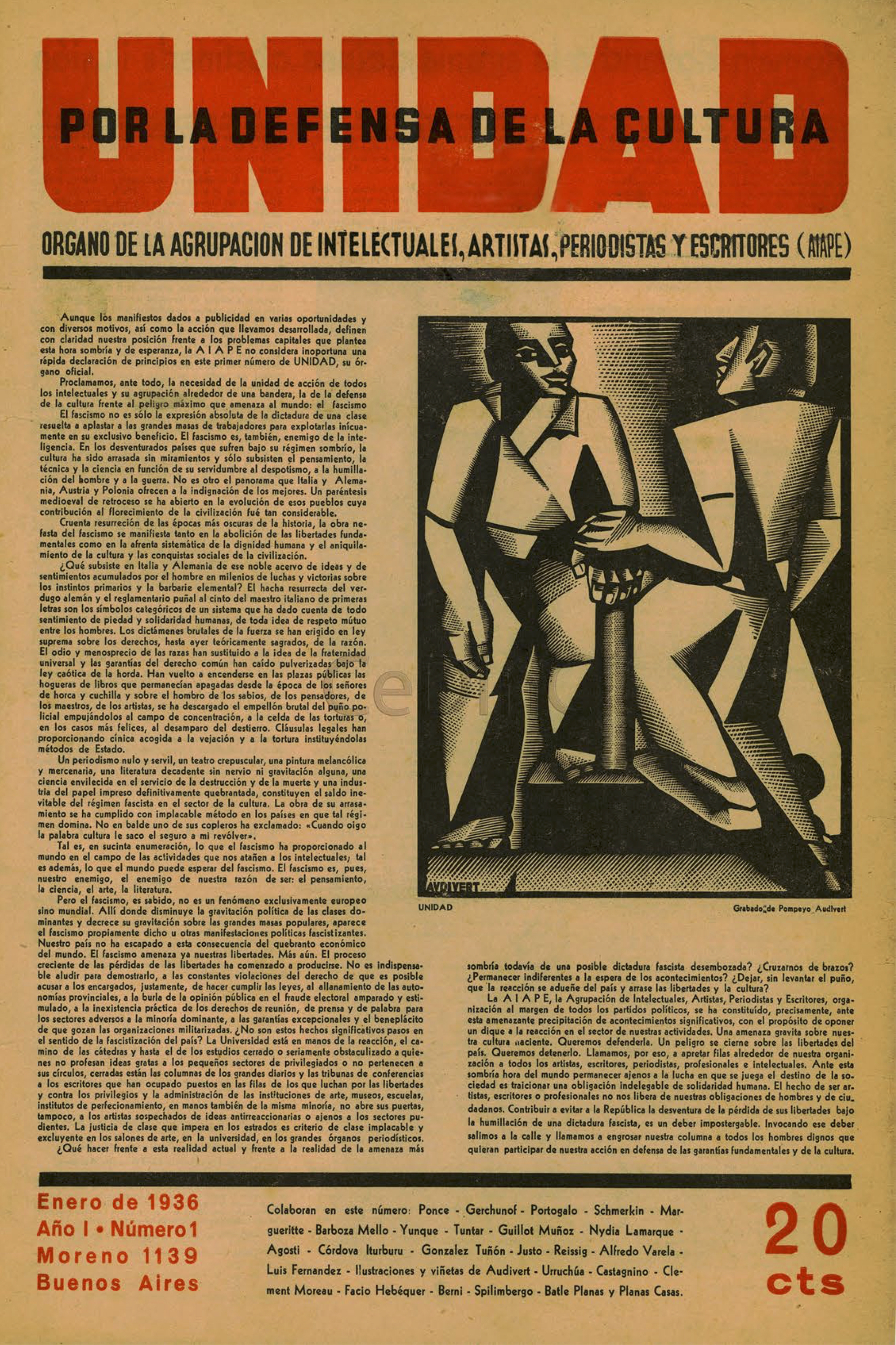Archive
Pompeyo Audivert
- Pompeyo
- Audivert
- 17-10-1900
- Catalonia ()
- 14-01-1977
- Buenos Aires (AR)
- EngraverIllustrator
Spanish-born Pompeyo Audivert migrated to Buenos Aires in 1911. He specialized in engraving, mastering its technique to the point of becoming a central figure in the local artistic field.
Word Count: 28

Pompeyo Audivert, engraving printed in Lamarque, Nydia. "Vosotros, enemigos." Unidad por la Defensa de la Cultura, no. 2, February 1936. 
Cuadrado, Arturo. “El grabador Pompeyo Audivert.” Correo Literario, 15 March 1944, p. 5. 
Pompeyo Audivert, Unidad, cover of Unidad por la Defensa de la Cultura, no. 1, January 1936. CeDInCI, Buenos Aires. Dolinko, Silvia. “Uma lectura de la colección de grabados del Museo de Arte Moderno de Buenos Aires.” Museologia & Interdisciplinaridade, vol. I–II, no. 5, May–June 2014, pp. 171–184, doi: https://doi.org/10.26512/museologia.v3i5.15477. Accessed 18 April 2021.
Dolinko, Silvia. “Consideraciones sobre la tradición del grabado en la Argentina.” Nuevo Mundo Mundos Nuevos, 5 July 2016. OpenEdition Journals, doi: https://doi.org/10.4000/nuevomundo.69472. Accessed 26 February 2021.
Dolinko, Silvia. “Comentario sobre Ciudad.” Museo Nacional de Bellas Artes, www.bellasartes.gob.ar/coleccion/obra/8398/. Accessed 26 February 2021.
Word Count: 81
Cuadrado, Arturo. “El grabador Pompeyo Audivert.” Correo Literario, 15 March 1944, p. 5.
Word Count: 10
Buenos Aires, Argentina (1911–1944), Mexico (1944–1942), Paris, France (1944–1950), Buenos Aires (1950–1977)
Calle Bartolomé Mitre 2300, Buenos Aires (studio); Calle Belgrano near Av. Entre Ríos, Buenos Aires (studio), Calle Humberto Primo, Buenos Aires (studio).
- Buenos Aires
- Milena Gallipoli. "Pompeyo Audivert." METROMOD Archive, 2021, https://archive.metromod.net/viewer.p/69/2950/object/5138-11020225, last modified: 12-05-2021.
-
UnidadMagazineBuenos Aires
From 1936, the anti-fascist movement in Argentina found one of its most consistent opinion platforms in the magazine Unidad, organ of the Association of Intellectuals, Artists, Journalists and Writers (AIAPE).
Word Count: 29
Galería Pacifico’s muralsMuralBuildingBuenos AiresA key episode in Argentina’s muralism was the creation of an extensive muralist programme at the Galerías Pacífico in 1946, carried out by the Grupo Taller de Arte Mural.
Word Count: 31
RessorgimentMagazineBuenos AiresOne of the most important platforms of Catalan communication was Ressorgiment, a monthly magazine written in Catalan, whose publication spanned the years from 1916 to 1972 and constituted 677 numbers.
Word Count: 27
Agrupación de Intelectuales, Artistas, Periodistas y Escritores (AIAPE)AssociationBuenos AiresThe Agrupación de Intelectuales, Artistas, Periodistas y Escritores – AIAPE (Association of Intellectuals, Artists, Journalists and Writers) was a main association that helped migrants integrate into Buenos Aires’ cultural life.
Word Count: 30
Asociación Amigos del ArteAssociationBuenos AiresFounded in 1924, the Asociación Amigos del Arte (Friends of the Arts Association) was a central organisation within the artistic milieu in Buenos Aires and became a relevant space of exhibition.
Word Count: 31